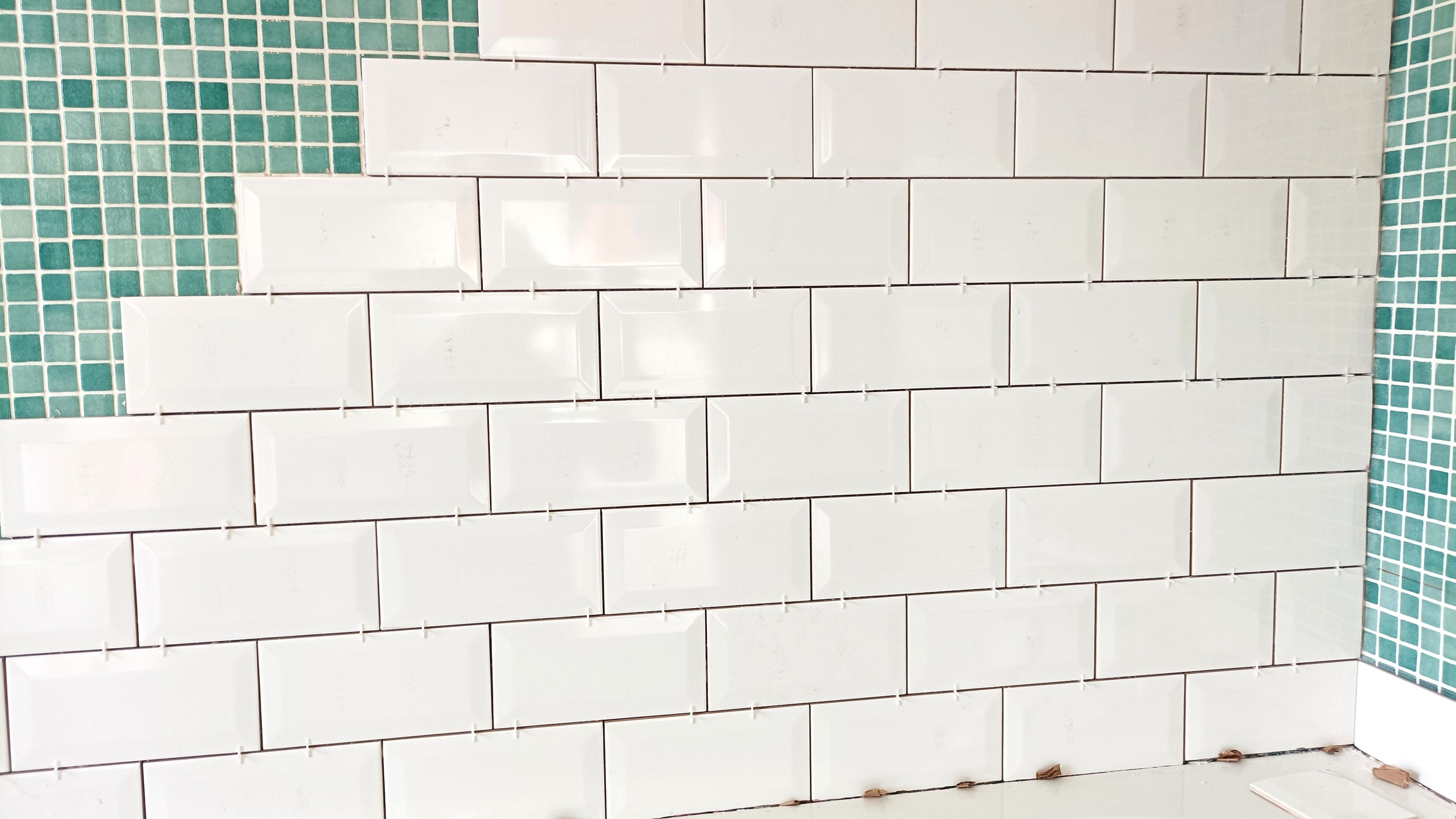Can you tile over tiles? What are the pros and cons
Can you tile over tiles doesn't have straightforward answer. Here we take a look at when it's a good and bad idea backed up by some expert insight

Can you tile over tiles is a question that DIYers often ask and the simple answer is yes you can, but it’s not always that straightforward or advisable. There are scenarios where tiling over tiles is a good choice and as you might expect there are times when it's not such a good move.
Knowing when and where to tile over tile makes sense. If you're tiling a wall where the tiles below aren’t fit for purpose then you’ll probably be looking at an expensive DIY disaster. But if the area you want to tile is in good condition then there’s a good chance tile on tile is going to be a success.
But it's still not that simple, so we are here to help put your mind at rest and give you the answers you are looking for.
Can you tile over tiles? The pros and cons explained
Here we can a look at the situations and scenarios where it makes sense to tile over tile.
The benefits of tiling over tiles
There can be a couple of benefits to tiling over tile, including:
1. Flat and level surface
A properly tiled wall provides a great base to work with as Stephen Russell from Ashley Cross Tilling explains: “Tiling over tile is one of the best "fixes", because the original tiling is a flat surface that needs no bonding with primer.” He continues: “Also you can see with the original layout that the tiling is running level around the floor and ceiling.”
2. It’s quicker
Tiling over tile is typically a much quicker and easier solution than removing all the original tiles and going back to bare walls. Removing tiles can be a time-consuming task especially if you are removing from wall to floor and floor.
What's more, if the wall is in a bad state of repair underneath, than tiling straight over tile this is quicker than removing tiles and then skimming walls or installing new board and tiling onto plasterboard.
3. Cost-effective
There’s no need to think about buying new or hiring tools to remove the tiles so you are saving money on these. If you don't have one already, you may need an SDS drill to remove stubborn tiles, for instance.
As mentioned before, when removing tiles there is the possibility that the tile removal will pull away plaster from the wall or make unwanted holes in the floor meaning both will need to be repaired before you can tile. This will involve purchasing more materials.
When and why it's not a good idea to tile over tile
Despite some of the benefits outlined above, there are some situations where tiling on top of existing tiles should be avoided.
1. Poor surface
If the tiles on the wall or floor are of cracked, missing grout and starting to lift of the surface then they will not provide a solid surface which can lead to problems further down the line as Russell reveals: “The original tiling may be not solidly adhered to the wall causing the new tiles to eventually fall off.”
How do you check? “Check the original tiles by tapping them gently with a coin to hear if the tiles have a hollow sound.” If they do you will need to remove the tiles before adding new tiles.
2. Extra weight
Adding another layer of tiles on top of the original tiles will double the weight on the wall or floor, which may lead to damage to the wall or floor. This is typically more of a problem for walls than floors. Standard sized lightweight tiles should be OK, but large heavy wall tiles should be avoided.
3. Doubling depth
Doubling the depth of the tiles means that you will need to do more accurate cuts especially around door frames, the bottom of door frames and windows. Also if adding an extra layer to the floor will your appliances still fit, especially under counter appliances? Also you will need to consider trim in certain areas, i.e. top of a half wall of tiles, to help hide the double width tile edges.
How do I prepare old tiles ready for tiling?
First you need to make sure that none of the tiles are loose and the surface is as smooth as possible, knock off any stray grout or cement and sand down.
The existing tiles will need to be clean and grease free to ensure better bonding. Use a detergent like sugar soap to clean. Not sure how to use it then check out our what is sugar soap guide for more information.
Should I use a special tile adhesive?
You can use any tile adhesive but to ensure that you get a long-lasting strong grip you need to use an adhesive that is more suited to the job. Instant grab and non-slip ready-mixed adhesives such as Everbuild 701 Super Plus and BAL White Star Plus are both good options.
Get the Homebuilding & Renovating Newsletter
Bring your dream home to life with expert advice, how to guides and design inspiration. Sign up for our newsletter and get two free tickets to a Homebuilding & Renovating Show near you.
Steve Jenkins is a freelance content creator with over two decades of experience working in digital and print and was previously the DIY content editor for Homebuilding & Renovating.
He is a keen DIYer with over 20 years of experience in transforming and renovating the many homes he has lived in. He specialises in painting and decorating, but has a wide range of skills gleaned from working in the building trade for around 10 years and spending time at night school learning how to plaster and plumb.
He has fitted kitchens, tiled bathrooms and kitchens, laid many floors, built partition walls, plastered walls, plumbed in bathrooms, worked on loft conversions and much more. And when he's not sure how to tackle a DIY project he has a wide network of friends – including plumbers, gas engineers, tilers, carpenters, painters and decorators, electricians and builders – in the trade to call upon.

